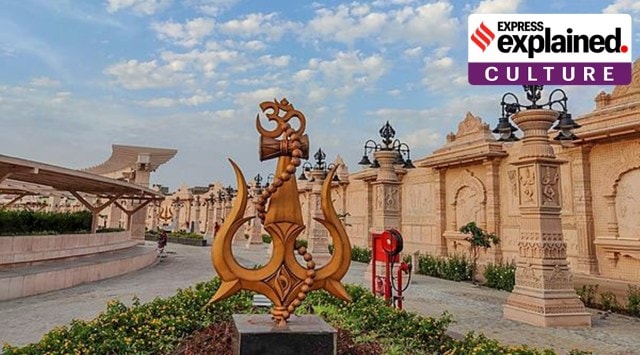After Vishwanath temple in Varanasi and the Kedarnath shrine in Uttarakhand, Mahakal temple is the third ‘jyotirlinga’ site to see a major upliftment exercise. The Rs 800-crore Mahakal corridor is four times the size of the Kashi Vishwanath corridor, which the PM had inaugurated late last year.

Why does the Mahakal temple in Ujjain hold a high significance in Hinduism? We explain.
Puranas say that Lord Shiva pierced the world as an endless pillar of light, called the jyotirlinga. There are 12 jyotirlinga sites in India, considered a manifestation of Shiva. Besides Mahakal, these include Somnath and Nageshwar in Gujarat, Mallikarjuna in Andhra Pradesh, Omkareshwar in Madhya Pradesh, Kedarnath in Uttarakhand, Bhimashankar, Triyambakeshwar and Grishneshwar in Maharashtra, Viswanath at Varanasi, Baidyanath in Jharkhand, and Rameshwar in Tamil Nadu.
Mahakal is the only jyotirlinga facing the south, while all the other jyotirlingas face east. This is because the direction of death is believed to be the south. In fact, people worship Mahakaleshwar to prevent an untimely death.
A local legend says that there once was a king called Chandrasena who ruled Ujjain and was a Shiva devotee. The Lord appeared in his Mahakal form and destroyed his enemies. Upon the request of his devotees, Shiva agreed to reside in the city and become its chief deity.
The Mahakal temple finds a mention in several ancient Indian poetic texts. In the early part of the Meghadutam (Purva Megha) composed in the 4th century, Kalidasa gives a description of the Mahakal temple. It is described as one with a stone foundation, with the ceiling on wooden pillars. There would be no shikharas or spires on the temples prior to the Gupta period.
Story continues below this ad
The city of Ujjain was also one of the primary centres of learning for Hindu scriptures, called Avantika in the 6th and 7th centuries BC. Later, astronomers and mathematicians such as Brahmagupta and Bhaskaracharya made Ujjain their home.
Also, as per the Surya Siddhanta, one of the earliest available texts on Indian astronomy dating back to the 4th century, Ujjain is geographically situated at a spot where the zero meridian of longitude and the Tropic of Cancer intersect. In keeping with this theory, many of Ujjain temples are in some way connected to time and space, and the main Shiva temple is dedicated to Mahakal, the lord of time. In the 18th century, an observatory was built here by Maharaja Jai Singh II, known as the Vedh Shala or Jantar Mantar, comprising 13 architectural instruments to measure astronomical phenomena.
It is said that during the medieval period, Islamic rulers gave donations to priests for offering prayers here. In the 13th century, the temple complex was destroyed by Turk ruler Shams-ud-din Iltutmish during his raid on Ujjain. The present five-storeyed structure was built by the Maratha general Ranoji Shinde in1734, in the Bhumija, Chalukya and Maratha styles of architecture. A century later, its marble walkways were restored by the Scindias.








































